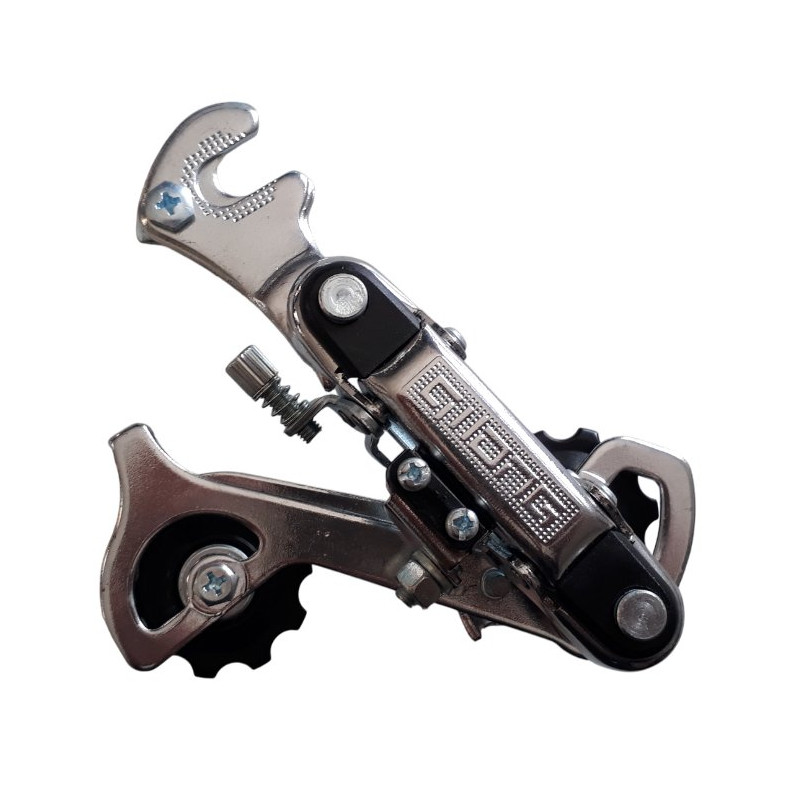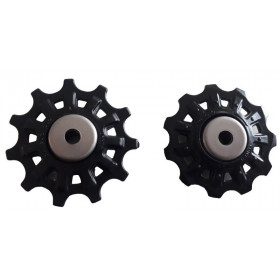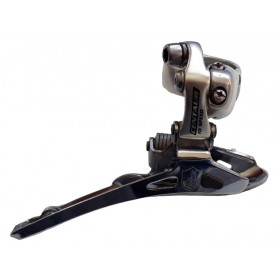 zoom_in
zoom_in
5 speed rear derailleur
- 11 Items
- New
€4.99 VAT included
Which 5-speed rear derailleur should you choose for a Shimano drivetrain ?
Whether you're restoring a vintage bicycle or equipping a simple and reliable ride, a 5-speed rear derailleur remains a practical option. Though less common than today’s 9, 10, or 11-speed systems, the 5-speed setup is ideal for cyclists seeking simplicity, ease of maintenance, and cost efficiency. Here’s a complete guide to the key features, compatibilities, and specifications to consider—especially when using a Shimano drivetrain.
What is a 5-speed rear Derailleur used for ?
The rear derailleur plays a crucial role in a bike’s drivetrain. It moves the chain across the rear cogs, allowing the rider to shift gears based on terrain or effort. In a 5-speed system, the freewheel or cassette includes five sprockets, usually paired with a single chainring up front.
This setup is typical of bikes from the 1970s to 1990s, old city bikes, or children’s bicycles. It’s also favored for minimalist builds or riders who prioritize durability and simplicity.
Compatibility with Shimano drivetrains
If your bike uses a Shimano drivetrain, it's important to choose a 5-speed rear derailleur that matches Shimano’s cable pull and indexing system. Fortunately, many vintage Shimano derailleurs or compatible models are designed to work with Shimano’s 5-speed indexed shifters or friction shifters.
Here’s what to check before choosing a model:
-
Indexed or Friction Shifting: If using indexed Shimano shifters, stick with vintage Shimano 5-speed derailleurs. For friction shifters, most generic models will do.
-
Cage Length: A short or medium cage is sufficient, since there are only five gears in the back and typically just one front chainring.
-
Cable Pull Ratio: Shimano uses a specific pull ratio—make sure the derailleur is designed for Shimano compatibility.
Key features of a 5-speed rear derailleur
A 5-speed rear derailleur stands out for its mechanical simplicity and robust design. Here are its main features:
-
Speed compatibility: built for use with a 5-speed freewheel or cassette.
-
Chain compatibility: compatible with wider chains made for 5/6/7-speed systems.
-
Mount Type: typically mounts to a derailleur hanger or directly to the frame.
-
Jockey and tension pulleys: ensure proper chain tension and smooth gear shifts.
-
Materials: often made from steel or aluminum, with minimal plastic—great for long-term durability.
Conclusion
Opting for a 5-speed rear derailleur that’s compatible with a Shimano drivetrain means choosing reliability, ease of use, and a low-maintenance setup. Whether you're restoring a retro bike or looking for a solid city ride, this drivetrain solution remains a great choice. Just make sure your shifters, chain, and cassette all work together smoothly, and your bike transmission will run like new.





